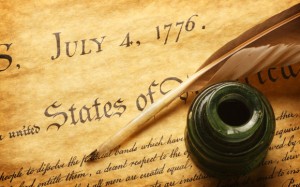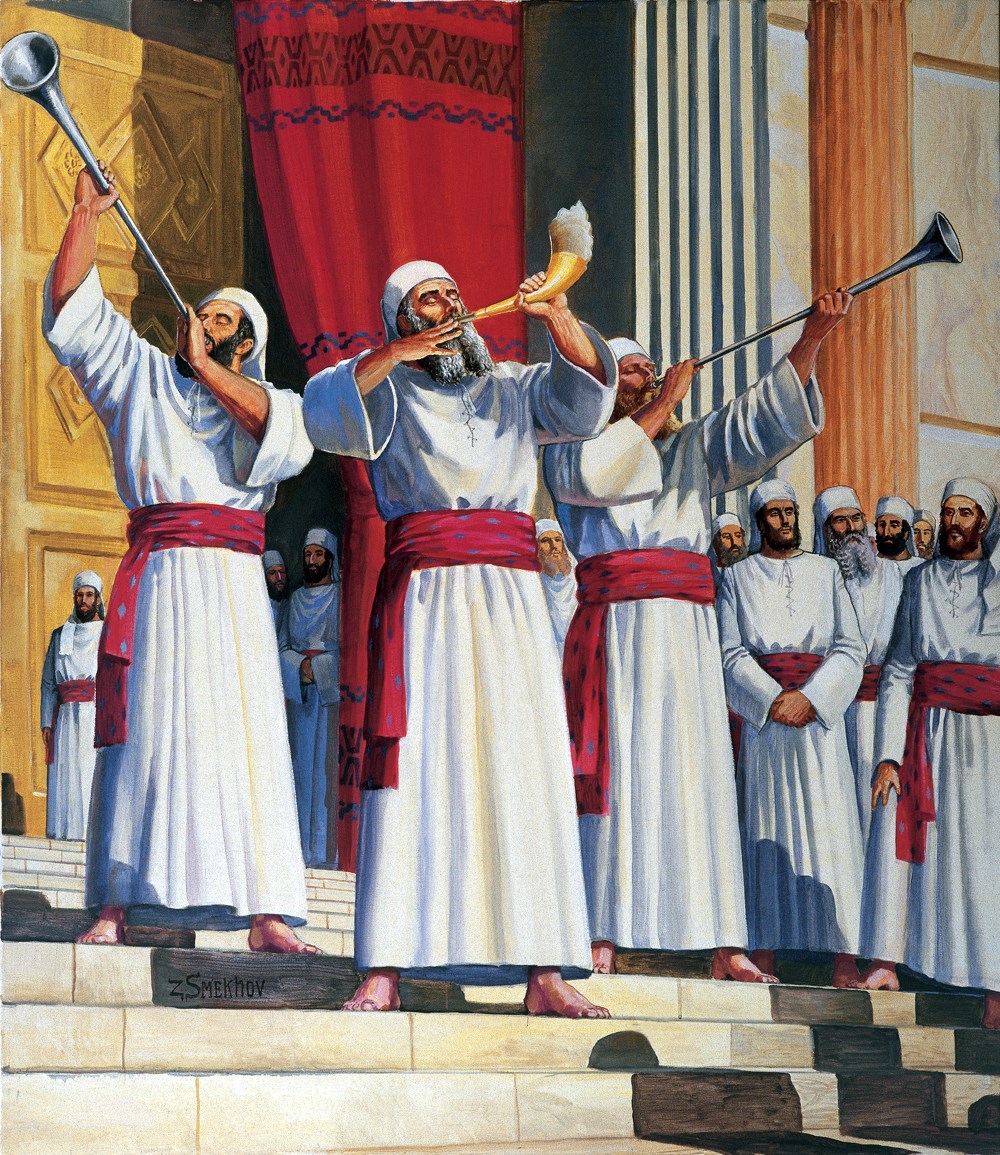Life is full of random chance and interesting coincidences: the pigeon that ruins your day with a well-aimed potshot, the lab partner in chemistry who turns into a life-long friend, or the refund check that comes just when you need to pay a bill. If one examines any given set of occurrences broadly enough, one is bound to find a pattern or two. We can explain a lot of them away as the result of random chance, but at other times these coincidences are too fortuitous or correlated to rapidly dismiss as arbitrary; there seems to be another force at work.
As an unabashed history nerd, I am intrigued by the coincidences that bubble up from the cauldron of intermingled stories.
For example, Thomas Jefferson and John Adams died on the same day—July 4, 1826, Independence Day. Arguably they were two of the most influential men in establishing the United States of America. At times they were fellow patriots, with one primarily authoring the Declaration of Independence and the other acting as its most ardent champion, tirelessly pushing for its ratification; later they were political opponents; in death they were friends.
John Adams was Thomas Jefferson’s senior by nearly eight years. Adams lived in Massachusetts while Jefferson lived in Virginia. Old age finally won over Adams, most likely causing his heart to fail; Jefferson died hours later after a prolonged illness that included toxemia and pneumonia. That they would both die in the same year is interesting, within hours intriguing, on the fourth of July—a striking coincidence.
Two politicians destined to be remembered in history for their tireless service in creating a nation would surely still be celebrated today for their achievements, but the dates of their deaths would likely not be mentioned often had they not occurred on the fourth of July: the day celebrated as the beginning of a nation that would establish a new standard for democracy and set lofty goals for equality and freedom for its citizens.
Another seeming coincidence occurred on September 22, 1827—the day Moroni commanded Joseph Smith to go to the hill and obtain the golden plates. Unfortunately, Joseph had shared the date with others and was fearful that former treasure-digging associates would try to interfere and take the plates (Bushman, 59). Despite this fear, he apparently could not petition Moroni for a postponement because the angel had told him that if he did not obtain the plates on the 22nd of September, he never would (Knight, 32–33).
 Joseph was both anxious and cautious about obtaining the plates. But interestingly, he was not overly prepared. Just after midnight, he approached his mother and asked if she had a chest with a lock he could borrow to conceal the plates. She did not, but Joseph assured the distraught Lucy he would still be able to accomplish his goal.
Joseph was both anxious and cautious about obtaining the plates. But interestingly, he was not overly prepared. Just after midnight, he approached his mother and asked if she had a chest with a lock he could borrow to conceal the plates. She did not, but Joseph assured the distraught Lucy he would still be able to accomplish his goal.
Shortly later, he and Emma left the household and did not return until after breakfast (Smith, 378–79). They were tired, but reported the task had been completed; Joseph was delighted not only with obtaining the plates but also with the Urim and Thummim, which he declared: “I can see any thing; they are Marvelus” (Knight, 33).
Why was it so important for Joseph to retrieve the plates on September 22nd? To show obedience? Perhaps, but there is another, somewhat intriguing alternate hypothesis.
In Leviticus 23, we learn the Lord commanded Moses to hold holy convocations or feasts of the Lord during various seasons or harvests (v. 4) to remember, in part, the Lord’s promises to His people. These feasts are still celebrated today.
In the fall, three feasts are held; the first is the Feast of the Trumpets (now known as Rosh Hashanah). The Lord declared: “In the seventh month, in the first day of the month, shall ye have a Sabbath, a memorial of blowing of trumpets” (Lev. 23:24).
Jewish scholars associate this feast with “(1) the beginning of Israel’s final harvest, (2) the day God set to remember His ancient promises to regather Israel, (3) a time for new revelation that would lead to a new covenant with Israel, and (4) a time to prepare for the Millennium” (Read, 2000).
The date of the Feast of the Trumpets varies yearly because it is determined by the Jewish calendar, which is based on the cycles of the moon—but it usually falls in September, the traditional time of the final harvesting. In 1827, the festivities began at sundown on September 21 and concluded in the early morning hours of the 22nd with the ritual blowing of rams horns, a symbol of revelation (Ex. 19:16, 19)—just about the time Joseph would have retrieved the plates.
of revelation (Ex. 19:16, 19)—just about the time Joseph would have retrieved the plates.
So was Joseph’s retrieval of the plates on September 22 a random coincidence or a fulfilment of a long ago promise? The phrase “the field is white already to harvest” is found seven times in the Doctrine and Covenants and the imagery of harvesting and gathering is found throughout our modern scriptures tying the theme of the harvest to the Restoration.
President Ezra Taft Benson noted the Book of Mormon is the tool the Lord prepared for the work of this final dispensation of the gospel before the Millennium (Benson, 7). That the tool would be given to Joseph to begin the harvesting and gathering on the day anticipated and memorialized in feasts held for millennia seems more than coincidence.
But it probably doesn’t matter whether the parallel exists because of random chance or by Divine design; the same effect is achieved, because parallels emphasize important events. The deaths of John Adam and Thomas Jefferson on July 4, 1826, remind us not of the Louisiana Purchase or the Alien and Sedition Acts but rather of the great work these men helped begin on July 4, 1776. Similarly, the retrieval of the plates by Joseph Smith on September 22 reminds us the Lord keeps his promises—both to the House of Israel and to each of us individually.
Joseph Smith was born into a poor farming family in Sharon, Vermont, on December 23, 1805. Though uneducated and constantly struggling to financially care for his family, Josiah Quincy
Jr., a prominent contemporary, noted that Joseph Smith, whom he had met in the early 1840s, could be the nineteenth century figure who would “exert the most powerful influence upon the destinies of his countrymen” (Schmuhl, 2009).
Over the past few months, much has been discussed on the Mormon bloggernacle regarding Joseph Smith’s life and ministry. On his birthday, perhaps we can expand the conversation, at least momentarily, by celebrating a coincidence that has affected the destinies of not only his countrymen but also those who embrace the gospel and praise the fulfilment of ancient promises in all corners of the world.
References:
Richard L. Bushman, Rough Stone Rolling (New York: Alfred A. Knopf, 2005), 59.
Joseph Knight Sr., “Joseph Knight’s Recollection of Early Mormon History,” ed. Dean C. Jessee, BYU Studies 17/1 (1976): 29–39.
Lucy Mack Smith, Preliminary Manuscript [1844–45], Church Archives, The Church of Jesus Christ of Latter-day Saints, Salt Lake City.
Ezra Taft Benson, “A New Witness for Christ,” Ensign, November 1984, 7.
Lenet Hadley Read, “The Golden Plates and the Feast of Trumpets,” Ensign, January 2000, accessed December 19, 2014, https://www.lds.org/ensign/2000/01/the-golden-plates-and-the-feast-of-trumpets?lang=eng.
Emily Schmuhl, “Joseph Smith ‘Most Influential’ 19th Century American,” Deseret News, August 28, 2009, Accessed December 20, 2014, http://www.deseretnews.com/article/705378662/Joseph-Smith-most-influential-19th-century-American.html?pg=all. See also Josiah Quincy, “Joseph Smith at Nauvoo,” Figures of the Past from the Leaves of Old Journals, 6th ed. (Boston: Roberts Brothers, 1884.





http://en.m.wikipedia.org/wiki/Texas_sharpshooter_fallacy
I’d rather not fall victim to it in any way.
‘Ya miss the point. Doesn’t matter if it is a coincidence.
there’s lots of coincidences in LDS history that we can celebrate. I like to celebrate the coincidence that happened in 1890 when the US govt seized the assets of the church and disincorporated the church and then shortly thereafter the Prophet received a revelation that they needed to end polygamy. That was a good one.
I also like to celebrate other coincidences like when President Carter threatened the tax exempt status of religious organizations that discriminated against blacks…and then a revelation was received to not discriminate against blacks any further.
So many good coincidences to look at in LDS history…love it
Its also a coincidence that the day Joseph received the plates is the autumnal equinox, the day that magic books of his time and printed nearby indicate being the best day to talk to spirits.
Garrett,
You crack me up! You forgot about the convenient revelation on polygamy when Emma realized she had a husband who had been practicing it behind her back. That too is a good one. So many to choose from it is hard to choose a favorite! Can I get an amen! 🙂
One of my favorite other coincidences was when studies came out the there is zero Hebrew DNA in native Americans. Then the LDS church changed the wording in the introduction of the Book of Mormon to read that the lamanites were among the ancestors of the native Americans….instead of the “principle ancestors” of the native Americans. That was a pretty good coincidence.
I think Casey is right about the real reason that Joseph retrieved the plates on September 21. In “Early Mormonism and the Magic World View” D. Michael Quinn lays out pretty convincingly the importance of the autumn equinox to those seeking to locate treasures through magical means. We know that Joseph and his family were part of that tradition, though Joseph largely put it behind him shortly after.
However, I appreciate the comparisons Laura Hales has made in this post. The parallel between the retrieval of the plates and the feast of the trumpets can give meaning and insight to believers even if the parallel is coincidence, just as we can appreciate two founders dying on Independence Day even without believing there was any supernatural power at work.
Brian,
Thank you so much for sharing your thoughts. There’s no coincidence.